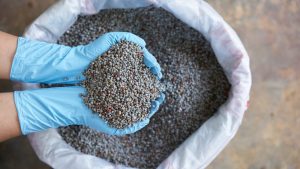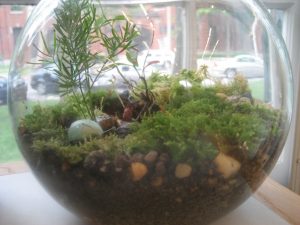Last Updated on February 12, 2024 by teamobn

If you have an outdoor water garden or fish pond, part of the challenge is keeping the water crystal clear. The task may not be entirely easy but it is very doable – and it doesn’t have to be expensive, too. Most pond filters found at home improvement stores can get pricey. However, you can make your DIY pond filter system.
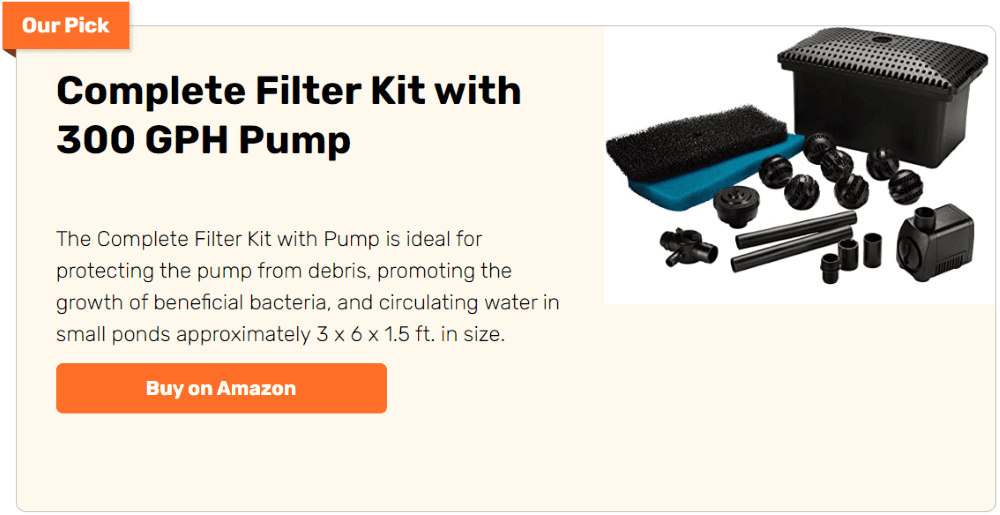
Making a fish pond filter by yourself will allow you to save money. It’s an inexpensive project and relatively easy to build. Plus, it works well, too. Some homemade pond filter systems work better than store-bought ones.
Advantages of Making a DIY Fish Pond Filter
Contents
Making a DIY fish pond filter is an exciting project that not only ensures the health and cleanliness of your aquatic ecosystem but also allows for customization to fit your specific needs. Here are the top five essentials for constructing the ultimate DIY fish pond filter:
1. Mechanical Filtration: Mechanical filtration is the first line of defence in removing solid debris from the water. Utilize materials such as filter pads, sponges, or even layers of fine mesh to trap particles like fish waste, uneaten food, and plant debris. These should be placed at the beginning of your filtration system to capture larger particles before they reach the biological and chemical filtration stages.
2. Biological Filtration: Biological filtration is essential for breaking down harmful ammonia and nitrite into less toxic nitrate. This process is typically facilitated by beneficial bacteria living on surfaces within the filter. Incorporate biological media such as bio-balls, ceramic rings, or lava rocks to provide ample surface area for bacterial colonization. Ensure proper water flow through the media to optimize bacterial activity.
3. Aeration and Circulation: Oxygenation is vital for the health of your fish and the efficiency of biological filtration. Install aeration devices such as air pumps, air stones, or surface agitators to promote oxygen exchange at the water surface. Additionally, proper circulation ensures that all areas of the pond receive adequate filtration. Consider the use of submersible pumps or fountain heads to maintain water movement and prevent stagnation.
4. Chemical Filtration (Optional): While mechanical and biological filtration is typically sufficient for most ponds, chemical filtration can be employed to address specific water quality issues such as excess nutrients or unwanted odours. Activated carbon, zeolite, or specialized resins can be placed within the DIY fish pond filter system to adsorb impurities and improve water clarity. However, chemical filtration should be used sparingly and replaced regularly to prevent the buildup of pollutants.
5. Regular Maintenance: Regardless of the filtration setup, regular maintenance is crucial for optimal performance. Schedule routine tasks such as cleaning mechanical filters, rinsing biological media, and monitoring water parameters to ensure a healthy environment for your fish and plants. Conduct periodic inspections to identify any issues or signs of malfunction, and address them promptly to prevent further complications.
By incorporating these essentials into your DIY fish pond filter design and maintaining a proactive approach to upkeep, you can create a thriving aquatic habitat that enhances the beauty of your outdoor space while providing a safe and healthy home for your fish.
You don’t have to shell out hundreds of dollars to get a high-quality filter system for your fish pond. This DIY pond filter project is simple and very easy to follow.
Materials:
- Large plastic container
- Water pump
- PVC pipes
- T-joint
- Bulkhead fittings
- Filter materials
- Bioballs
- Plastic mesh
Tools:
- Scissors
- Drill with drill bit
- PVC cutter
Click on any image to start the lightbox display. Use your Esc key to close the lightbox.

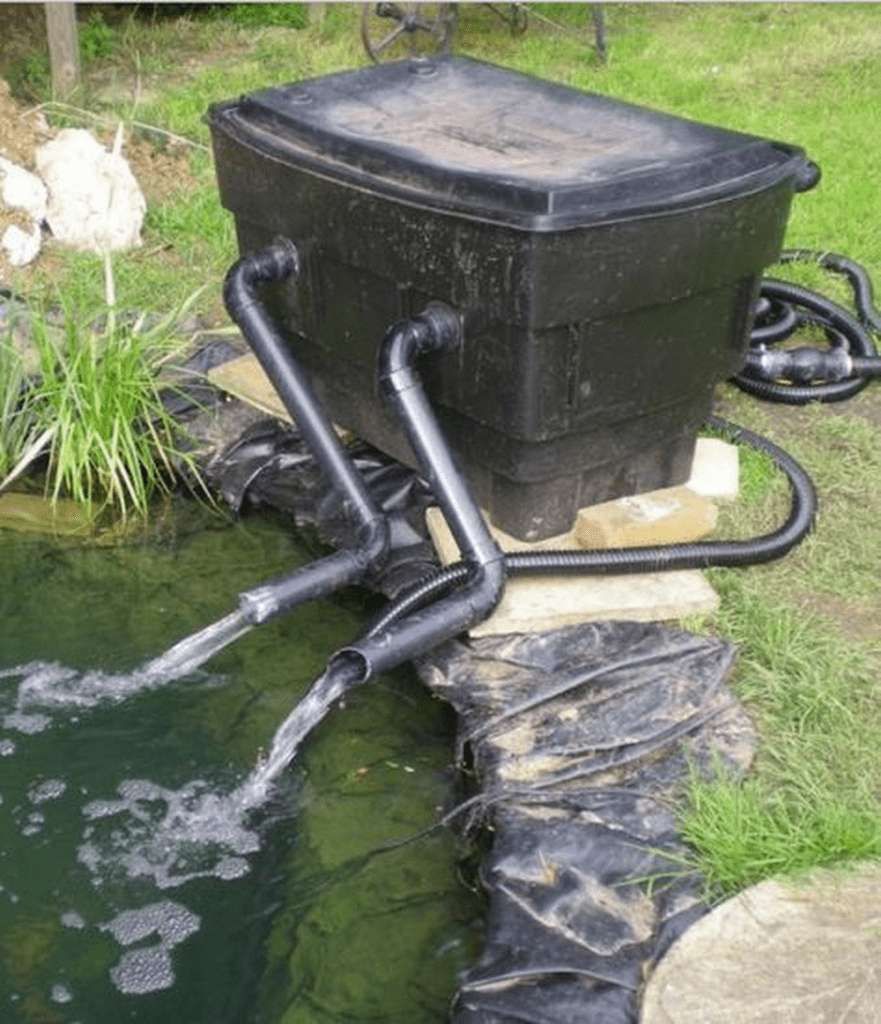
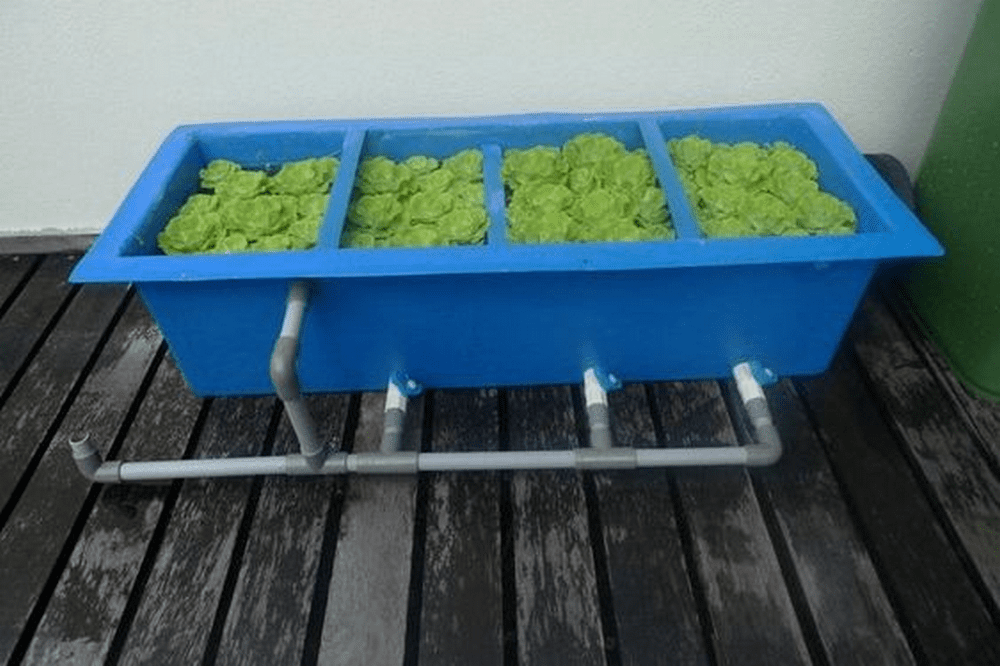

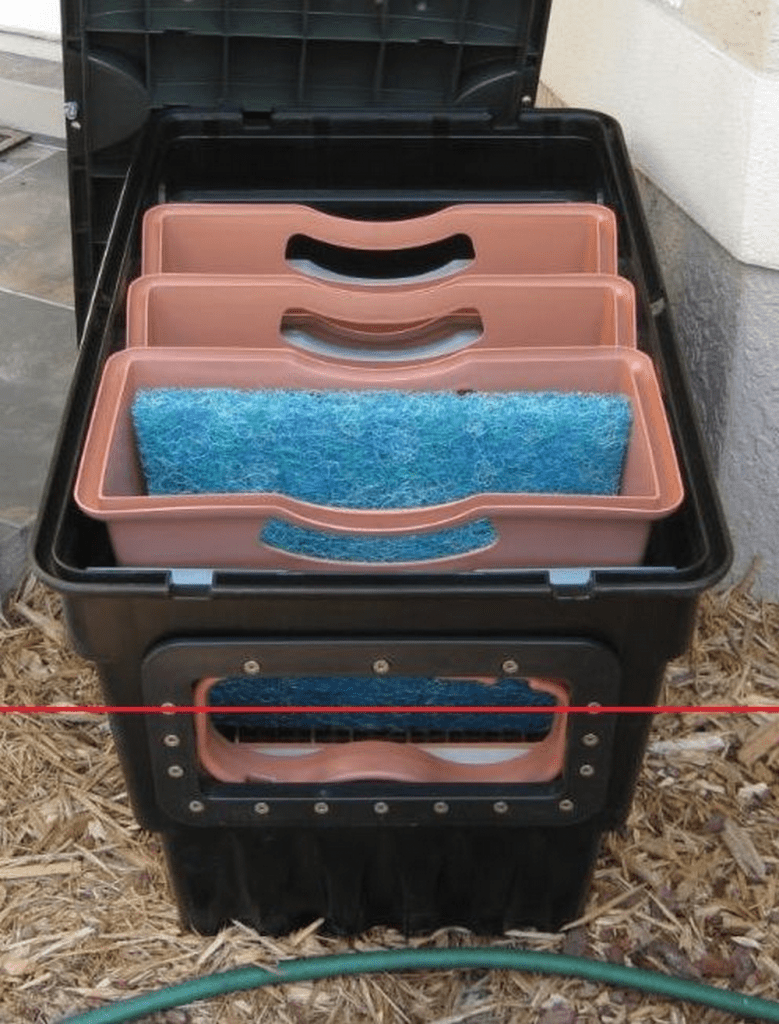


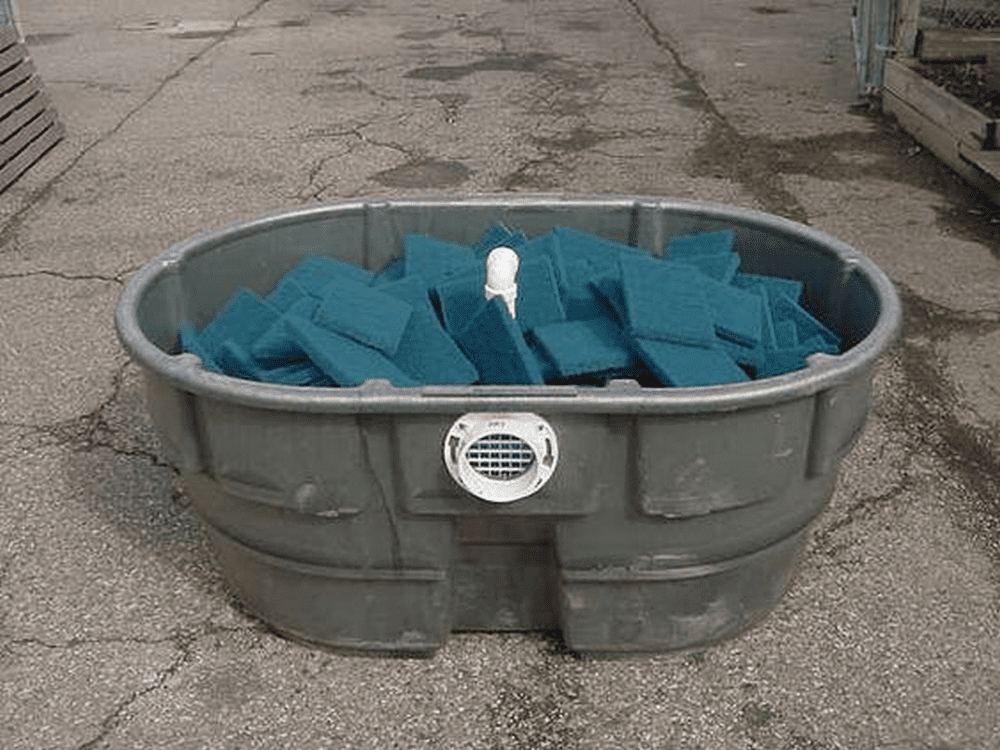
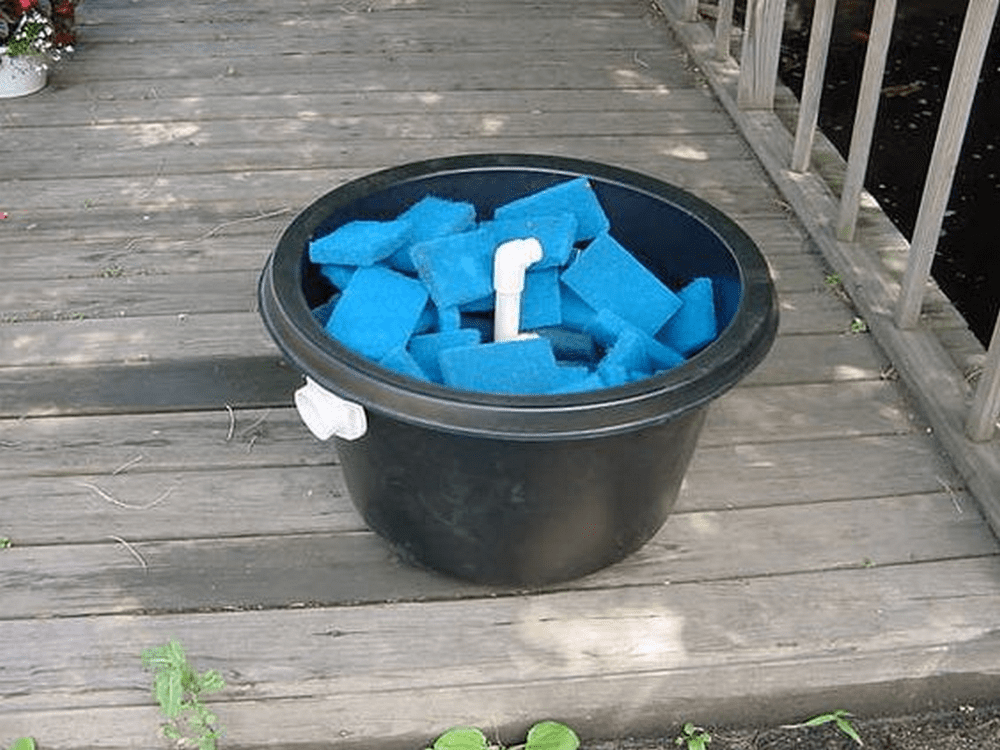
You can make your fish pond filter, too! Learn how via this video.
A DIY fish pond filter offers several advantages for pond owners looking to maintain a healthy and thriving aquatic environment. Here’s an overview of the key advantages:
1. Cost Savings: Building your fish pond filter can result in significant cost savings compared to purchasing a pre-made filter system. By utilizing readily available materials and repurposing items, you can create an effective filtration system at a fraction of the cost.
Building your DIY fish pond filter can be a financially savvy decision, offering substantial cost savings compared to investing in a pre-made filter system. By leveraging locally available materials and repurposing items you may already have on hand, you can construct an efficient filtration system at a fraction of the cost.
Whether it’s PVC pipes, plastic containers, or natural elements like rocks and sand, the possibilities for making a DIY fish pond filter are vast. This not only reduces your initial investment but also frees up funds for other essential aspects of pond maintenance or enhancements, allowing you to get more bang for your buck.
2. Customization: DIY fish pond filters provide the flexibility to customize the filtration system to meet the specific needs of your pond. You can tailor the design, size, and components to address unique water quality challenges and accommodate the requirements of different fish species and aquatic plants.
Customization is where DIY fish pond filters truly shine, offering unparalleled flexibility to tailor the filtration system to the unique needs of your pond ecosystem. No two ponds are alike, and a one-size-fits-all approach to filtration simply won’t suffice. With a DIY setup, you’re the architect of your pond’s health and vitality. You have the freedom to design and customize every aspect of the filtration system, from its size and layout to the selection of components and filter media.
Whether you are contending with excess debris, or catering to the specific pH requirements of your fish and plants, customization is key. By addressing the specific water quality challenges of your pond and accommodating the unique needs of different fish species and aquatic plants, you can create a filtration solution that’s perfectly tailored to your pond’s requirements.
This level of customization not only ensures optimal performance but also promotes the overall health and balance of your pond environment, allowing your fish and plants to thrive.
3. Improved Water Quality: The Ultimate DIY fish pond filter focuses on essential filtration principles to effectively remove debris, organic matter, and harmful pollutants from the water. By providing mechanical, biological, and chemical filtration, the DIY fish pond filter helps maintain optimal water quality and clarity, promoting a healthy aquatic ecosystem.
The DIY fish pond filter is designed with a clear focus on essential filtration principles, aiming to effectively remove debris, organic matter, and harmful pollutants from the water. By incorporating mechanical, biological, and chemical filtration mechanisms, this DIY fish pond filter ensures that your pond maintains optimal water quality and clarity, fostering a healthy and balanced aquatic ecosystem.
Mechanical filtration involves physically trapping and removing solid particles and debris from the water. This is achieved with filter media such as sponges, filter pads, or fine mesh screens, which capture suspended particles as water passes through the DIY fish pond filter. By efficiently removing visible impurities, mechanical filtration helps prevent the accumulation of debris in the pond, reducing the need for manual cleaning and promoting water clarity.
Biological filtration harnesses the power of beneficial bacteria to break down organic waste and harmful pollutants in the water. These bacteria colonize porous surfaces within the filter media, where they metabolize ammonia and nitrite into less toxic compounds, such as nitrate. This natural process, known as the nitrogen cycle, helps maintain water quality by converting harmful substances into less harmful forms, ultimately promoting a healthier and more stable pond environment.
Chemical filtration involves specialized filter media, such as activated carbon or zeolite, to remove dissolved impurities and contaminants from the water. These media adsorb or chemically bind to substances like dissolved organic compounds, excess nutrients, and harmful chemicals, effectively removing them from the water column.
By enhancing water clarity and reducing the concentration of pollutants, chemical filtration complements mechanical and biological filtration to ensure comprehensive water quality management.
4. Sustainability: DIY fish pond filters can be designed with sustainability in mind, using eco-friendly materials and energy-efficient components. By reducing energy consumption and minimizing environmental impact, the DIY fish pond filter contributes to a more sustainable pond ecosystem.
In addition to promoting water quality and clarity, the DIY fish pond filter is also designed with sustainability in mind. By using eco-friendly materials and energy-efficient components, such as solar-powered pumps or low-energy filtration systems, the filter minimizes environmental impact and reduces resource consumption.
This commitment to sustainability not only benefits the natural ecosystem of your pond but also contributes to broader conservation efforts, helping to preserve and protect our planet’s delicate aquatic habitats.
5. Empowerment: Building your fish pond filter empowers you as a pond owner, giving you the knowledge and skills to maintain and troubleshoot the filtration system independently. Feel more confident and capable of managing water quality issues and ensuring the well-being of your fish and aquatic plants.
The DIY fish pond filter offers cost-effective, customizable, and sustainable solutions for maintaining a clean and healthy pond environment. By incorporating essential filtration principles and empowering pond owners with DIY techniques, the filter enhances water quality and promotes the vitality of fish and aquatic life.

Safety First!
Safety precautions are paramount when working on the Ultimate DIY fish pond filter and its top five essentials. Here’s a breakdown of safety measures to consider:
Mechanical Filtration:
- Use appropriate safety gear such as gloves and protective eyewear when handling sharp objects like cutting tools or PVC pipes.
- Take care when cutting materials to size and use tools properly to avoid accidents.
- Ensure proper ventilation in the work area, especially when working with materials that produce dust or debris.
Biological Filtration:
- Avoid inhaling dust particles when handling biological media such as bio-balls or ceramic rings; consider wearing a mask if necessary.
- Be cautious of the weight of biological media to prevent strain or injury when lifting or moving them.
- Keep biological media away from children and pets to prevent accidental ingestion or choking hazards.
- Install physical barriers, such as fences or covers, around the pond area to restrict access by children and pets. Ensure these barriers are sturdy and secure to prevent any attempts to bypass them.
- Periodically inspect the pond area and storage locations for any signs of damage or tampering that could pose a risk to children or pets. Address any issues promptly to maintain a safe environment.
Aeration and Circulation:
- Use outdoor-rated and waterproof electrical equipment to prevent electric shock hazards.
- Install ground fault circuit interrupter (GFCI) outlets near the pond to protect against electrical accidents.
- Regularly inspect electrical connections and equipment for signs of wear or damage, and address any issues promptly.
Optional Chemical Filtration:
- Wear appropriate personal protective equipment (PPE) such as gloves and protective clothing when handling chemicals like activated carbon or specialized resins.
- Store chemicals in a secure location away from children and pets, following manufacturer instructions for proper handling and disposal.
Consistent Maintenance:
- Always power off and disconnect electrical equipment before performing maintenance tasks to prevent electric shock accidents.
- Exercise caution when working around water to avoid slipping or falling; consider wearing footwear with good traction.
- Keep tools and equipment organized and stored safely to prevent accidents caused by tripping hazards. Have a plan in place for responding to accidents or injuries caused by tripping hazards. Ensure that first aid supplies are readily available and that everyone knows how to access them in case of an emergency.
By adhering to these safety precautions, you can minimize the risk of accidents and injuries while working on your DIY fish pond filter. Remember to prioritize safety at all times to ensure a safe and successful project experience.
The Wrap Up
Crafting the ultimate DIY fish pond filter relies on prioritizing five critical essentials: mechanical filtration, biological filtration, aeration and circulation, optional chemical filtration, and consistent maintenance. These components work in harmony to make an effective DIY fish pond filter system that promotes water clarity, sustains a thriving aquatic ecosystem, and enhances the overall beauty of your pond.
By integrating these essentials into your filtration design and maintaining them diligently, you ensure the sustained health and vibrancy of your pond ecosystem, providing a haven where your fish and plants can flourish.
Mechanical filtration efficiently removes debris and solid waste, preventing them from clouding the water and detracting from the pond’s aesthetic appeal. Biological filtration cultivates a balanced ecosystem by fostering the growth of beneficial bacteria that break down harmful substances, ensuring optimal water quality for your aquatic inhabitants.
Aeration and circulation mechanisms oxygenate the water, vital for the well-being of fish and other aquatic organisms, while also preventing stagnant areas where algae can proliferate. Optional chemical filtration supplements these processes, addressing specific water quality issues such as excess nutrients or unwanted odours, thereby enhancing the overall clarity and purity of your pond.
Consistent maintenance is key to upholding the effectiveness of your filtration system over time. Regular cleaning of mechanical filters, monitoring of water parameters, and timely replacement of filter media prevent the accumulation of debris and maintain optimal filtration efficiency. By adhering to these practices, you create an environment where your fish and plants thrive, ensuring years of enjoyment as you bask in the tranquil beauty of your pond oasis.
Frequently Asked Questions
1. What materials can I use for mechanical filtration in your DIY fish pond filter?
Common materials for mechanical filtration include filter pads, sponges, and fine mesh. These are effective at trapping debris and solid waste from the water.
These materials can be used individually or in combination to create a comprehensive mechanical filtration system tailored to the specific needs of your pond. Regular maintenance, including cleaning and replacement of filtration materials, is essential to ensure optimal filtration performance and maintain water clarity in your pond ecosystem.
2. How do you encourage the growth of beneficial bacteria for biological filtration?
To promote biological filtration, provide ample surface area for bacteria to colonize by using biological media such as bio-balls, ceramic rings, or lava rocks. Ensure a consistent flow of water through the media to support bacterial activity.
3. What are some ways to ensure adequate aeration and circulation in your fish pond?
Aeration devices such as air pumps, air stones, or fountain heads can be used to oxygenate the water and promote circulation. Submersible pumps or fountain heads also help maintain water movement to prevent stagnation.
4. When should you consider using optional chemical filtration in your DIY fish pond filter?
Optional chemical filtration can be utilized when specific water quality issues arise, such as excessive nutrients or foul odours. Activated carbon, zeolite, or specialized resins can be added to the filter system to address these concerns.
6. How often should I perform maintenance on your DIY fish pond filter?
Regular maintenance is essential for optimal filter performance. Tasks may include cleaning mechanical filters, rinsing biological media, and monitoring water parameters. Maintenance frequency depends on factors like pond size, fish load, and environmental conditions, but a general rule is to perform checks and cleaning at least once a month.

